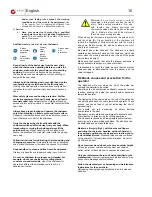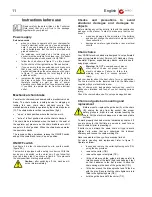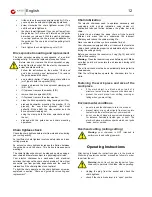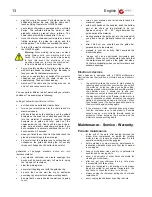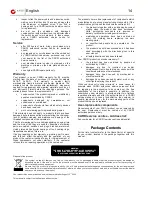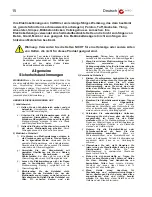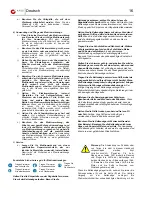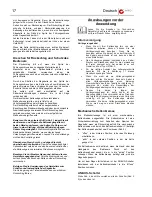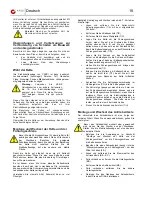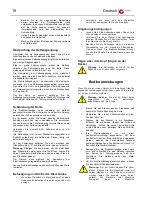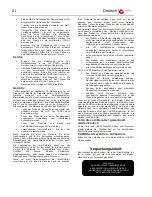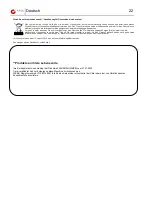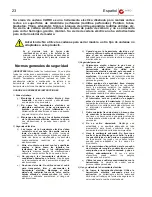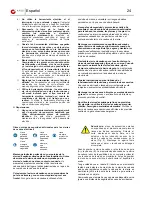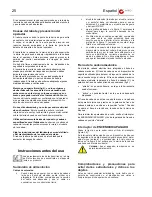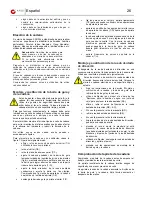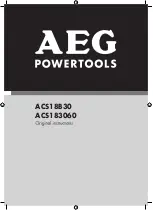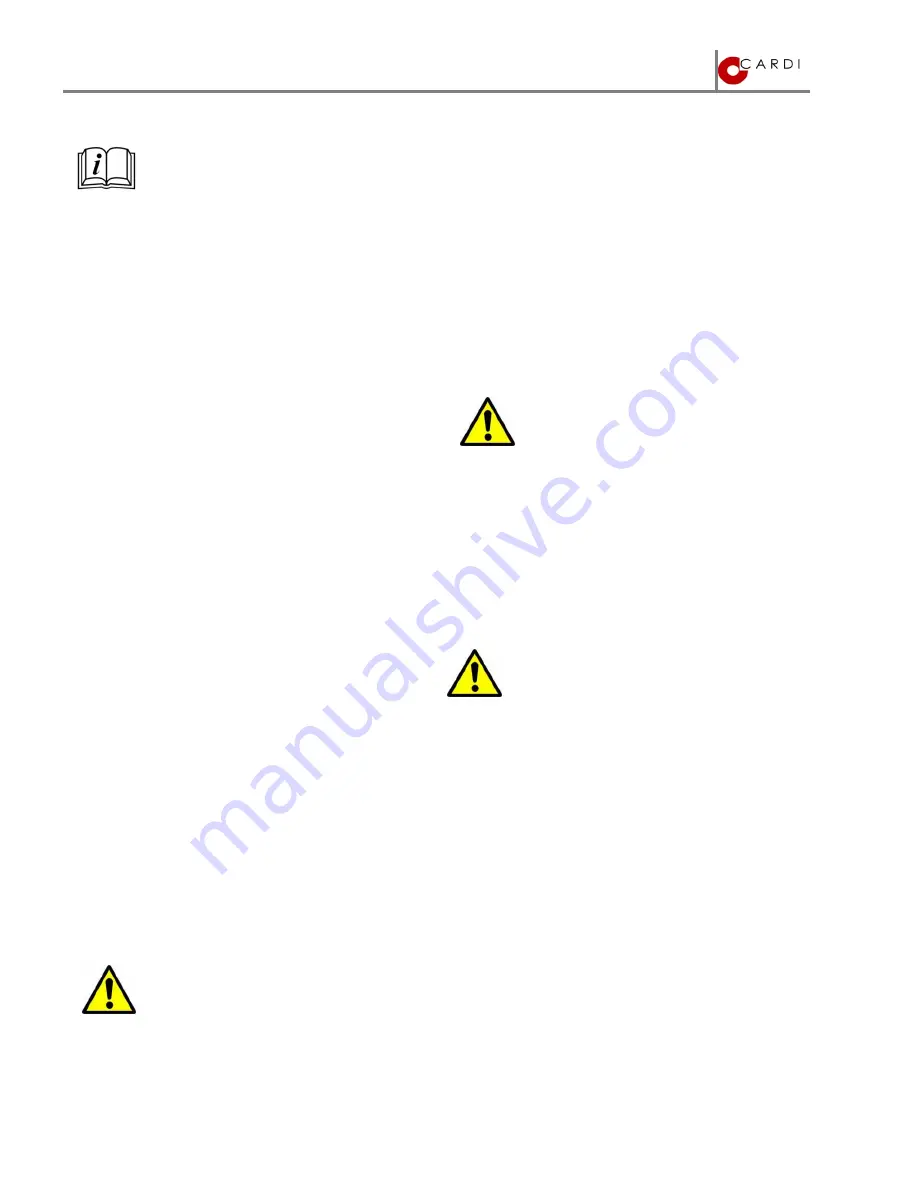
11 English
I
I
n
n
s
s
t
t
r
r
u
u
c
c
t
t
i
i
o
o
n
n
s
s
b
b
e
e
f
f
o
o
r
r
e
e
u
u
s
s
e
e
Read carefully the data written on the Technical
Data sheet that you will find in the package
together with your product.
Power supply
Extension cords
when you have to operate with your chainsaw far
from an electrical outlet, you can use an extension
cord. If you use it make sure that the section of the
cord is suitable and that the cord is provided with
ground conductor;
the extension cord (made up of cable, plug and
socket) must be suitable for outdoor use. It is better
if the cord is made of rubber and it is H07RN-F;
follow the chart shown in figure 11 on this manual
for the choice of the right section of the conductors;
if you use more than one extension cord make sure
that every cable in each extension cord has a
section not lower than the value shown on the chart
in figure 11, considering the total length of the
extension cords;
remember the longer an extension cord the higher
the drop in voltage. This causes loss of rpm and
therefore cooling as well as loss of power
operating your chainsaw. Don’t use extension cords
if you have to operate too far from the electrical
outlet.
Mechanical chain brake
Your electric chainsaw is endowed with a mechanical chain
brake. The chain brake is a safety device for stopping or
locking the saw chain when kickback occurs. The
mechanical chain brake is operated by the chain brake lever
(C). The chain brake lever has two positions (fig.5):
“open”, in back position, where the tool can work;
“active”, in front position, where the chain in blocked.
The chain brake is activated when the hand or the wrist of
the operator put pressure on the chain brake lever until it
snaps into “active” position. When the chain brake operates
the saw chain blocks.
The resume cutting operations, release the ON/OFF switch
and pull the chain brake lever in “open” position.
ON/OFF switch
See figure 4 in order to understand how to use the switch
(figure 2 E).
Your switch is equipped with a safety lock device. With this
device you can switch on the motor only if you follow first
step I and than step II, as shown in figure 4. This prevents
the chainsaw from starting accidentally.
Caution: after switching off, the machine will
not be idle immediately.
Checks and precautions to avoid
structural damages and damages to
objects
Before starting any cutting activity, talk with the construction
manager or the planner in order to make sure that the cut
doesn’t:
make any damage to the structure of the building
and doesn’t change the structural characteristics of
the construction;
damage any water or gas pipeline or any electrical
circuits.
Chain choice
Your CARDI electric chainsaw is designed to cut perforated
masonry (perforated bricks), Poroton, tuff, Gasbeton, Ytong,
Alveolater, Siporex, expanded clay blocks, solid bricks etc.
using proper chains.
Warning: Do NOT use wood saw chains or
other kind of chains not proper for your
electric chainsaw. Failure to follow this
warning may result in serious personal
injury.
Ask your dealer about the best chain for your application.
The chain must have the features listed on the Data sheet
supplied with your electric chain saw.
Use of chains with inappropriate features can result in
kickbacks, vibrations and loss of control causing serious
injury.
Check the chains before use. Do not use damaged chains.
Chain and guide bar mounting and
replacement
Before mount or replace the guide bar (A) or the chain
(B), unplug the plug from the socket. Use proper
safety gloves in order to avoid injuries touching the
chain. Put the electric chainsaw on a clear and stable
surface.
To work properly the chain must be lubricated by chain oil. If
you are using for the first time a new chain, soak for one
hour in chain oil prior to mounting it.
It better to use always the same chain oil type to avoid
different oils mixes that can undermine the lubricant
efficiency and reduce the chain working life.
Never use waste oil, heavy oil or excessive fluid oil.
For chain mounting and replacement refer to figure 7.
Operate as follow:
loosen and remove the carter-tightening nuts (7/A)
using the key provided;
remove the carter (7/B);
remove the upper steel plate (7/C);
fit the chain around the guide bar being careful to
rotation sense of the teeth (fig.8) and keeping it taut
so that it adheres to the bar in order to have the
chain savings in the back of the guide bar (7/ D);
fit the bar around the drive sprocket and fit the bar
with the pins. Be sure that the chain tightener pin is
fitted in the tightening hole (7/E);
hold the guide bar and fit the carter (7/F);
Summary of Contents for Alligatore
Page 2: ......
Page 3: ......
Page 4: ......
Page 5: ......
Page 6: ......
Page 7: ......
Page 8: ......
Page 45: ...C A R I D ...
Page 46: ...C A R I D ...
Page 47: ...C A R I D ...














